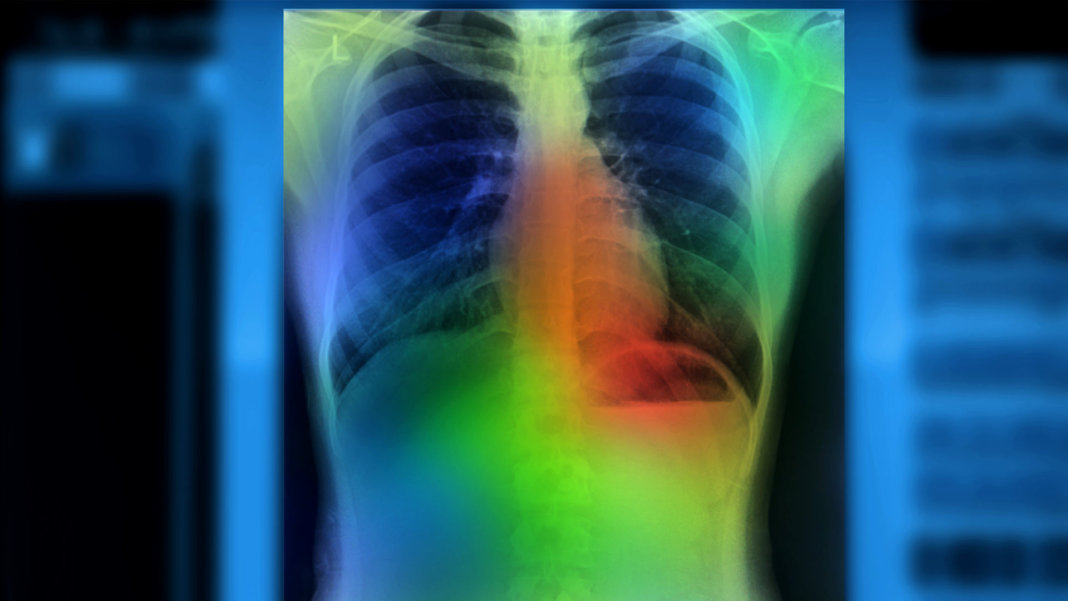
It’s January 2026. You wake up. Your digital health assistant takes thirty seconds to run a full diagnostic of your body, deploying dozens of sensors capturing gigabytes of data. It tells you that based on the last 48 hours, you might be coming down with the flu.
How close are we to this vision?
Artificial intelligence (AI) is a machine’s ability to use its own intelligence to analyze data, learn patterns, and use it to predict future outcomes. It’s like teaching a machine basic math, and watching it eventually learn calculus.
So, what does this mean for healthcare?
It’s envisioning an AI that will learn your preferences, anticipate your needs and behaviors, monitor your health, and help you problem-solve in support of your health.
But for Artificial Intelligence to yield reliable results, it needs data to learn from and an algorithm to work with.
In a previous blog, Be the CEO of Your Own Health, we spoke of how diagnostic medicine is being brought out of doctors’ offices and into our daily lives by means of continuous monitoring. That’s the data we need.
Now it’s up to your medical AI assistant to use that data and change medicine from retrospective, reactive, and generic… to prospective, proactive, and personalized.
Today, we’ll explore the role of AI in the future of healthcare by focusing on two areas:
(1) Precision and personalized medicine
(2) Medical procedures
Let’s dive in...
(This blog is written by Peter Diamandis, MD and Felicia Hsu, MD)
PRECISION AND PERSONALIZED MEDICINE
Today, going to the doctor is about sick care more than healthcare. It’s reactive, not proactive. You typically only seek or get medical help *after* you are sick.
Advances in diagnostic medicine are critical to converting sick care to actual healthcare—in other words, using technology to keep you in peak health.
Let’s look at how AI is playing a role in precision and personalized medicine in five ways:
(1) How does AI use the data from wearables and health monitoring sensors? AI fits hand in glove with health monitoring wearables. Consider the Oura Ring, one of the most promising wellness rings. The Rockefeller Neuroscience Institute has partnered with Oura to develop an AI-driven model to identify individuals before they become contagious with the flu. And the results of their first study were promising. With its infrared LEDs, accelerometers, gyroscopes, and body temperature sensors, the Oura Ring was able to detect common COVID-19 symptoms three days earlier with 90% accuracy.
Oura Ring has also partnered with various applications such as WILD.AI, which helps women optimize elite training according to their menstrual cycle. WILD imports sleep and resting heart rate data from Oura to help athletes train, fuel, and recover based on their personalized body metrics.
(2) How does AI improve point-of-care diagnostics like ultrasounds? Exo has developed a device that combines both ultrasound and AI for enhanced imaging in patients. It doesn’t just use novel sensors and nanotechnologies to visualize any part of the body––organs and vasculature––and translate it into a 3D image. It uses a novel computational photography algorithm to perform procedural guidance in real-time.
In other words, it helps physicians use the ultrasound in real-time to parse clinical findings. These kinds of diagnostics will increase the reach medicine has by making previously skill-based techniques more accessible to a less trained user.
(3) Can AI make medical imaging analysis more efficient and accurate? Qure.ai is one of the most advanced startups deploying AI-powered algorithms for medical imaging. They have specialized algorithms for x-rays, CT scans, and MRIs: the three most common imaging modalities used in hospitals. Their products feature fully automated detection and 3D visualization. And their algorithms are incredibly accurate.
A study involving 1.2 million x-rays and their corresponding radiology reports tested the Qure.ai system and confirmed its accuracy. Similarly, their head CT algorithm has been used for triage of brain bleeds, fractures, and monitoring the progression of traumatic brain injury.
(4) How can AI improve cancer diagnosis and treatment? How does a doctor distinguish between different stages of cancer and whether to do surgery versus chemotherapy? They take a biopsy of the cancer tissue, look at a droplet volume of tissue under a microscope, and make a diagnosis. PathAI assists pathologists in making rapid and accurate diagnoses for every patient, every time.
They recently produced a tool that automatically analyzes images of HER2 stained breast cancer slides to monitor response of the disease during new treatments for breast cancer. Machine learning models were trained to predict tumor molecular phenotypes for skin, stomach, breast, and lung cancer. A tumor phenotype is a way of figuring out all the features of a cancer tumor so that we know exactly what drug will be most effective. It’s precise and personalized medicine.
(5) What if we can amplify the rate of drug discovery with AI? Insilico Medicine is an AI-based platform that helps identify novel drug targets, rapidly test drug candidates, and output those ideal for further development. Its “drug discovery engine” sifts through millions of data samples to determine the signature biological characteristics of specific diseases. It identifies the most promising treatment targets and using a new technique in AI, generative adversarial networks (GAN), creates molecules perfectly suited against them.
With a mere 50 people, they are able to achieve the same work it takes the pharmaceutical industry 5,000 people to do—in a fraction of the time. They are now using their AI platform to predict outcomes of clinical trials, which will cut the number of failed trials.
AI & MEDICAL KNOWLEDGE / DATA
As medical data continues to grow exponentially, the ability for a mortal physician to hold in their mind, and process all of the available data, has become impossible. The unassisted MD was left in the digital dust ages ago.
Just imagine if you go to Fountain Life or Health Nucleus for a full-body diagnostic which includes a full-body MRI, coronary CT, full-genome sequence, blood diagnostics and much, much more. Such an exam generates more than 150 gigabytes of data about you, your body, and health. What in the world would a physician from just 20 years ago do with all of this data? It’s useless without AI to analyze it, right?
How about the explosion of medical research being published? Did you know that there is a new medical article appearing at the rate of at least one every 26 seconds—that’s 3,300 articles per day, or more than 1.2 million articles per year?
How many of these articles has your doctor read?
But your AI physician can consume them all. Even better, it can consume every medical article ever written.
AI & MEDICAL PROCEDURES
Now that we’ve discussed precision and personalized medicine, what if your disease is beyond the reach of a drug and requires surgery?
A study at Baylor Medical Center found that despite the best training, more than half of adverse surgical events are due to human error. In the surgical setting, the saying “to err is human” could be a matter of life and death. It’s why there’s been a push towards minimally invasive procedures. It’s less risk because humans have to do less. It’s not an aggression towards medical training—it’s just how it is.
This is where Soft Tissue Autonomous Robot (STAR) comes in: a robot that can sew tissue five to ten times faster than a human, with far greater precision. In addition to cutting and suturing, it has fluorescent and 3D imaging, force sensing, and submillimeter positioning.
It was shown to stitch together two segments of intestine better than experienced surgeons. It was also able to take a detailed map of a typical heart, and input from built-in touch and vision sensors to find the damaged valve area with 95% accuracy in animal trials.
This isn’t AI technology replacing the surgeon. It’s using AI for technical skills augmentation, in that it uses algorithms to match or outperform human surgeons based on its experience with surgeries over time–– a bit like residency, but for a robot. Next, it’s trying to conquer more complicated surgeries like cancerous tumor removal, trauma surgery, and heart surgery.
With advances like these, surgeries will no longer involve the same amount of risk.
CONCLUSION
Artificial Intelligence has already drastically changed the face of medicine by analyzing massive quantities of data to uncover patterns and insights that can save lives.
Today’s primary fuel source for AI development is, by far, the explosion of data at our fingertips. Simultaneously, we are rapidly devouring that data and creating machine learning algorithms to sift through the data, find patterns, and apply it forward.
The future will be about AI-human collaboration. Not only will this partnership increase efficiency and reduce human error—it will also create a world in which individually customized medicine will move from science fiction to the standard of care.
We are on the cusp of a technological revolution in healthcare. Massive datasets, skyrocketing computational power, quantum computing, cognitive surplus capabilities, and remarkable innovations in AI.
The future of human health and longevity is truly exciting.
JOIN MY ABUNDANCE360 COMMUNITY
If you want my coaching as an exponential entrepreneur and to reinforce those mindsets that will inspire and guide you to create a hopeful, compelling and abundant future for yourself and humanity, then consider joining my year-round Abundance360 coaching program.
Every year, my team and I select a group of 360 entrepreneurs and CEOs to coach over the course of a year-long program. You can join at any time for a full year’s worth of personal coaching on Exponential Tech, Longevity, Moonshots, and Abundance thinking.
My mission is to help A360 members obtain mastery in four specific mindsets: an Abundance Mindset; an Exponential Mindset; a Moonshot Mindset; and a Longevity Mindset. Together we will actively select and reinforce your preferred Mindsets.
Topics: Medicine/Health Abundance 360 Artificial Intellegence healthcare preventive medicine personalized medicine






